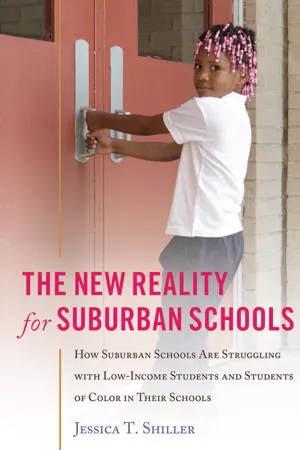
The New Reality for Suburban Schools
How Suburban Schools Are Struggling with Low-Income Students and Students of Color in Their Schools
- 156 pages
- English
- PDF
- Available on iOS & Android
The New Reality for Suburban Schools
How Suburban Schools Are Struggling with Low-Income Students and Students of Color in Their Schools
About This Book
Since the year 2000, the population of people of color and of poor families in the suburbs has been rapidly increasing, making these areas far more diverse than they were a generation ago. Along with the increase in diversity has come re-segregation, leaving some schools with very high concentrations of low-income students and students of color, while others remain mostly white. These re-segregated schools are often not well-prepared to deal with the issues their students face. In addition, they are often subject to strict accountability demands that focus on improving test scores. These conditions create a unique situation for schools serving high populations of students of color and low-income students, one that is strikingly similar to urban schools. The New Reality for Suburban Schools presents three case studies of inner-ring suburban middle schools coping with these issues. Although the principals and teachers were aware that students faced poverty and lived in increasingly racially and ethnically diverse communities, a variety of factors prevented them from using practices that would have addressed the students' needs. As a result, these suburban schools did not provide much better educational opportunities to low-income students and students of color than their urban counterparts. Readers of this volume can learn how school leaders and teachers try to negotiate educational mandates while serving their students. The book concludes with suggestions for improving the ways these schools serve their students.
Frequently asked questions
Information
Table of contents
- Cover
- Table of Contents
- Preface. Why a Book About Suburban Schools?
- Acknowledgments
- Chapter 1. Changing Demographics: The New Reality for Suburban Schools
- Chapter 2. Barrow County: An Example of the New Suburbia
- Chapter 3. Lanfield Middle School: Tension and Division in the New Suburban School
- Chapter 4. Goodwin Middle School: Cultural Gaps and Resistance to Facing Them
- Chapter 5. Oakwood Middle School: Teachers Who Can Connect but Don’t Expect Enough
- Chapter 6. Conclusion: Where Do We Go from Here? Lessons from and for the New Suburban Schools
- Epilogue
- Notes
- References
- Index